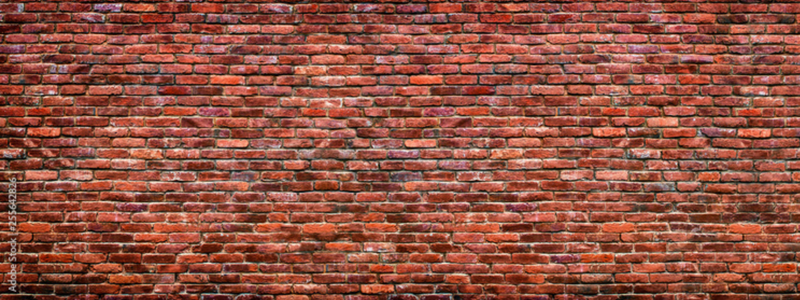
What Is Brick Made Of
Brick is still a popular material used in the structure of homes, commercial buildings, and more. But to better understand how long brick houses last, why bricks are such a useful building material, and why brick staining is the best option for brick buildings, let’s take a look at what brick is made of.

History of Bricks
Red bricks are a durable building material that have been around for thousands of years.
The earliest known fired bricks appeared in Neolithic China around 4,400 BC and were used for flooring. They were made of red clay then fired on all sides at more than 1,100 degrees.
By the Qujialing period (3,300 BC), fired bricks were used to pave roads and as building foundations.
Bricks today come in various classes, colors, shapes, sizes, and textures. But how are bricks made?
How Bricks are Made
Regardless of the type of brick, the main ingredient is clay.
Most manufacturers blend different types of clay to achieve the desired properties of the raw materials.
However, not all clay is created equal.
Clay is unique to the region from which it is collected so there are many variations in color. The mineral and chemical content of the clay, as well as the firing temperature, determine the brick color.
Clays rich in iron oxide create reddish bricks while clays containing a lot of lime result in bricks with white or yellow hues.
Bricks in the northeast United States tend to be reddish-brown.
Bricks in the Southeast are typically made of red clay so the final result is a distinguishable shade of red.
In the upper Midwest, yellow clay is used with the result being bricks that are a light yellow to beige color.
The manufacturing process of brick begins with dry, raw clay that is crushed and ground in what is called a jaw crusher, turning the material into smaller particles.
The clay is then mixed with other ingredients that may include sand, lime, iron oxide, or fly ash.

Processes of Making Brick
Bricks are then formed using one of three processes: extrusion, molding, or pressing.
Extrusion
Extrusion, or wirecut, is the most popular option as it provides the lowest cost for producing bricks in large quantities. It consists of feeding the raw materials into one end of a pug mill, a machine that mixes the ingredients into a plastic state. The material is then fed into an extruder that compacts it and removes all of the air. Next, a die is used to form a specific brick shape. Saws, wires, or a long cable then cut the material into a desired length.
Molding
Molding is the process of shaping soft, wet clay with a mold.
Large scale manufacturing uses a hydraulic press that compacts the material into specific shapes. Sand on the inside of the mold creates surface texture as well as aids in removing the brick from the mold.
Pressing
Pressing is similar to the molding method but uses thicker clay and greater force.
The thick clay mixture has a low water content that, when pressed, creates a more accurate and sharper edged brick. The mixture is then placed in a die and compacted with a steel plunger. It’s a more expensive process as longer firing is required but results in more durable bricks.
Drying
After the bricks are shaped, they are then dried to remove excess moisture. Moisture that is not removed will evaporate too quickly during the firing process, causing cracks to appear. The bricks are dried in tunnel dryers that consist of long chambers through which the bricks are pushed. Hot air circulated by fans is forced into the chamber, drying the bricks. Another option is to use automatic chamber dryers where the bricks sit on extruded bars that are placed in rows.
Firing
Firing is the next step of brick manufacturing. Bricks usually stay in the same kiln cars that are used for the drying process to transfer them into a kiln. The bricks are then fired between 10 and 40 hours, depending upon the kiln type. The most common type used for firing bricks is a tunnel kiln, followed by periodic kilns. The latter operates in periods or cycles of loading, firing, and cooling. In a tunnel kiln, the bricks pass through various temperature zones as they travel down the tunnel. The temperature of each zone is controlled and the kiln operates continuously.
Cooling
The next step in the brick manufacturing process is cooling. Cooling is important because the rate at which the bricks cool has a direct effect on color. Cooling times vary drastically depending on the type of kiln used during the firing process. Times rarely exceed 10 hours in tunnel kilns and between 5 and 24 hours in a periodic kiln.
De-hacking follows cooling. It’s the process of unloading a kiln or kiln care after the bricks have cooled. The bricks are then sorted, graded, and packaged in self-contained, strapped cubes that can be broken down into individual strapped packages. Bricks are then typically placed in a storage yard or loaded onto trucks or railcars for delivery.

Staining Brick
While the color of fired clay depends upon its chemical composition, firing temperatures, and method of firing, bricks can be stained to achieve different colors. Brick staining is as natural as the makeup of the brick itself. B
BrickImaging is the oldest brick staining company in North America and their exclusive Stayntech® masonry stains are available in 12 individual colors; custom colors are available upon request. Brick staining never compromises the brick. Their stains will never bubble, chip or peel like painted brick and are maintenance-free.












